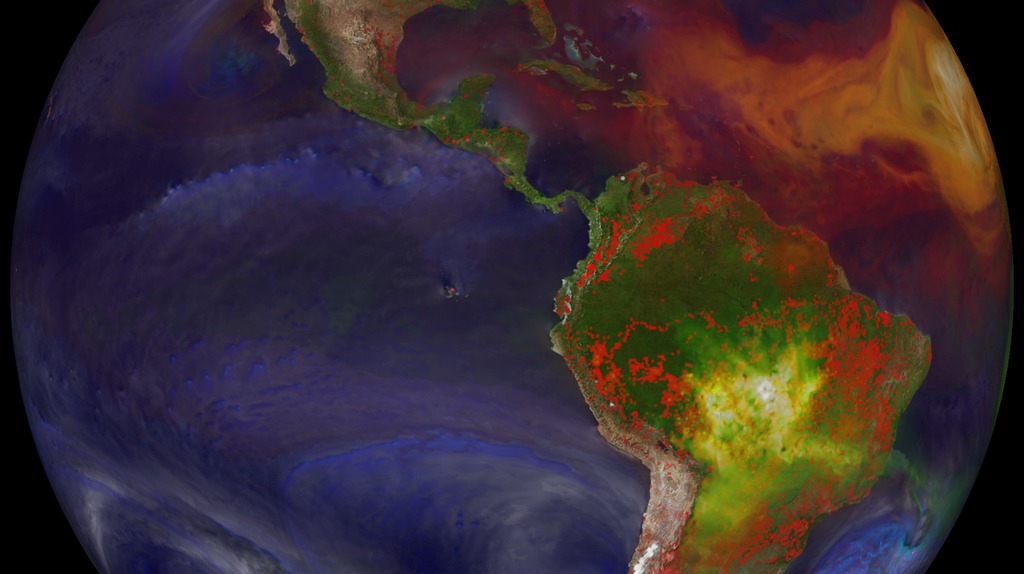Paint By Particle
Satellites, balloon-borne instruments and ground-based devices make 30 million observations of the atmosphere each day. Yet these measurements still give an incomplete picture of the complex interactions within the membrane surrounding Earth. Enter climate models. Through mathematical experiments, modelers can move Earth forward or backward in time to create a dynamic portrait of the planet. Researchers from NASA Goddard's Global Modeling and Assimilation Office recently ran a simulation of the atmosphere that captured how winds whip aerosols around the world. Such simulations allow scientists to better understand how these tiny particulates travel in the atmosphere and influence weather and climate. In the visualization below, covering August 2006 to April 2007, watch as dust and sea salt swirl inside cyclones, carbon bursts from fires, sulfate streams from volcanoes—and see how these aerosols paint the modeled world.

NASA models and supercomputing have created a colorful new view of aerosol movement.
Winds disperse vast quantities of dust (red), sea salt (blue), sulphate (white) and black and organic carbon (green) around the world.

A massive cloud of dust (red) blows from the Sahara over the Atlantic Ocean, where it may affect the formation or intensity of hurricanes.

Concentrations of sea salt (blue) sucked into Pacific Ocean typhoons and hurricanes appear as bright dots in the center of the storms.

Extensive fires across Africa and in southeast Australia spew black and organic carbon (green).

Sulphate (white) erupts from the Karthala volcano on Grande Comore Island, off the southeast coast of Africa.

Using models called GEOS-5 and GOCART, the simulation took several weeks to process on a NASA Center for Climate Simulation supercomputer.
For More Information
See NASA.gov
Credits
Please give credit for this item to:
NASA's Goddard Space Flight Center and NASA Center for Climate Simulation
Image of Discover Supercomputer at the NASA Center for Climate Simulation (NCCS) courtesy of NASA/Pat Izzo
-
Animator
- William Putman (NASA/GSFC)
-
Scientist
- William Putman (NASA/GSFC)
-
Writer
- Jarrett Cohen (Global Science and Technology, Inc.)
Release date
This page was originally published on Thursday, May 24, 2012.
This page was last updated on Wednesday, May 3, 2023 at 1:53 PM EDT.
